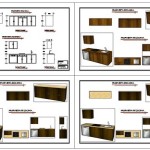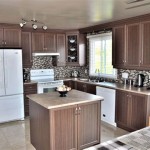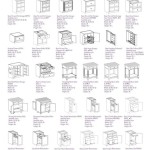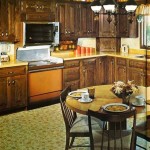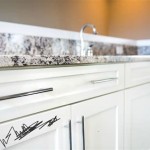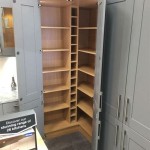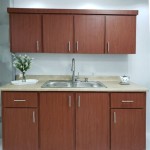Plate Stand for Kitchen Cabinet: A Comprehensive Guide
Plate stands are essential kitchen cabinet organizers that maximize vertical space, streamline storage, and enhance accessibility. They optimize storage solutions and elevate kitchen functionality. This comprehensive guide explores the critical aspects of plate stands for kitchen cabinets, empowering you with the knowledge to make informed choices.
1. Types of Plate Stands
Plate stands come in various types to suit different kitchen needs and cabinet layouts. The most common include:
- Vertical Plate Stands: Designed to store plates vertically, they utilize height effectively and prevent cluttering.
- Horizontal Plate Stands: Store plates horizontally, providing easy access and stability.
- Adjustable Plate Stands: Allow for customizable storage, accommodating different plate sizes and stack heights.
- Drawer Plate Stands: Integrated into cabinet drawers, they pull out smoothly for convenient access to stored plates.
2. Materials and Construction
Plate stands are typically made from durable materials such as:
- Stainless Steel: Rust-resistant, hygienic, and easy to clean.
- Chrome: Durable and resistant to corrosion.
- Plastic: Lightweight, affordable, and available in various colors.
3. Size and Capacity
Consider the number and size of plates you need to store to determine the appropriate size of plate stand. They come in various widths, depths, and heights to fit different cabinet sizes and plate collections.
4. Features and Accessories
Some plate stands offer additional features to enhance functionality:
- Non-Slip Surface: Prevents plates from sliding or tipping.
- Dividers: Organize and separate different plate sizes.
- Multiple Tiers: Increase storage capacity by providing multiple levels.
- Built-in Handles: Facilitate easy handling and removal.
5. Installation and Maintenance
Plate stands are generally easy to install in kitchen cabinets. Most require minimal assembly and can be positioned according to cabinet dimensions. Regular cleaning is essential to maintain hygiene and prevent dirt accumulation.
6. Benefits of Plate Stands
- Optimized Storage: Maximize vertical space and prevent clutter.
- Enhanced Accessibility: Easy retrieval and visibility of stored plates.
- Space-Saving: Stack plates vertically, freeing up valuable cabinet space.
- Organization and Efficiency: Keep plates neatly arranged and easily identifiable.
7. Choosing the Right Plate Stand
To select the optimal plate stand for your kitchen cabinet, consider these factors:
- Cabinet Dimensions: Measure the available space and choose a stand that fits snugly.
- Plate Capacity and Size: Determine the number and size of plates you need to store.
- Type and Features: Evaluate the available types and choose a stand with features that meet your needs.
- Material and Durability: Consider the material's resilience and ease of maintenance.
- Budget: Plate stands vary in price, so set a reasonable budget and compare options.
Incorporating a plate stand into your kitchen cabinet is a practical and efficient way to create a more organized and functional storage solution. By understanding the essential aspects discussed in this guide, you can make an informed decision and choose the ideal plate stand to enhance your kitchen organization and streamline your daily tasks.

Dish Racks Traditional Other Metro Itb Kitchen Wardrobe Manufacturer Furniture Design Diy Storage

Diy Inside Cabinet Plate Rack Remodelando La Casa

13 Ways To Add A Plate Rack Your Kitchen

13 Ways To Add A Plate Rack Your Kitchen

Solid Wood Oak Plate Rack Kitchen Racks Cabinets

Kitchen Accessories Stainless Steel Dish Holder Cabinet Build In Drainer Rack Diy China Metal And Storage Shelf Made Com

13 Ways To Add A Plate Rack Your Kitchen

Bringing Back A Classic 25 Trendy Ways To Add Plate Rack Decoist

Rectangular Powder Coated Plate Holder Kitchen Drawer

Diy Inside Cabinet Plate Rack Remodelando La Casa
Related Posts

